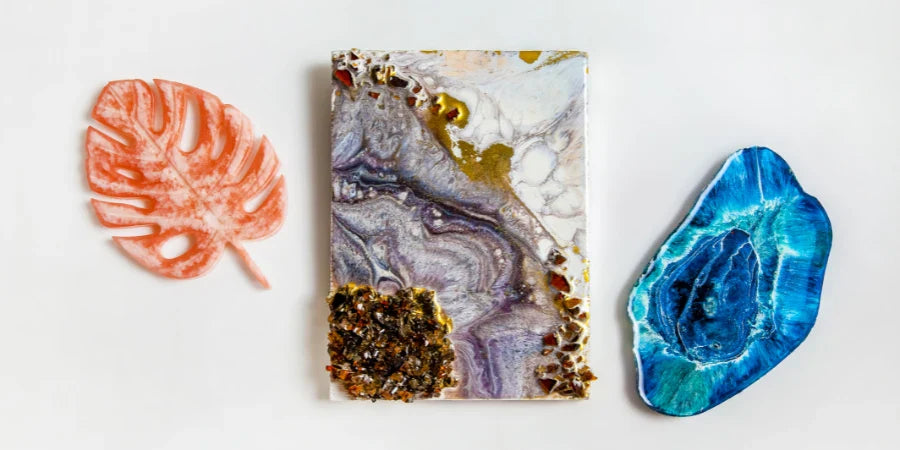Understanding Resin Compatibility with Different Surfaces
When working with resin, understanding the compatibility with different surfaces is crucial for achieving a successful outcome. Whether you are working on a DIY project or a professional job, knowing which resin is suitable for a specific surface can significantly affect the final result. In this blog, we will talk about the importance of resin compatibility and explore how you can ensure optimal adhesion and durability for your next project. We recommend joining a resin art workshop to understand the significance of resin surfaces under professional guidance.
What is Resin Compatibility?
Resin compatibility refers to the ability of a resin to adhere effectively to a particular surface without any issues such as delamination or peeling. Different surfaces, such as wood, metal, or concrete, have unique characteristics that impact how well resin adheres to them. Factors such as surface porosity, texture, and composition significantly determine which type of resin is best suited for a specific project.
Why is Resin Compatibility Important?
Using the wrong type of resin for a particular surface can result in poor adhesion, leading to many issues, such as bubbling, cracking, or peeling. This not only affects the project's aesthetics but also compromises its structural integrity. Ensuring resin compatibility with the surface you are working on can prevent these problems and create a durable and long-lasting finish.
How to Determine Resin Compatibility?
The Surfaces
Here are some surfaces that generally form a strong bond with resin, making them ideal for various projects:
- Non-Porous Surfaces: These surfaces offer a smooth, waterproof layer that creates a strong bond with resin. Some popular examples include:
- Metals: Aluminium, stainless steel, and copper are excellent choices for resin projects. They provide a sturdy base and resist warping or damage from the curing process.
- Glass: The smooth, transparent nature of glass makes it a popular canvas for resin art. Ensure the glass is clean and dry before applying resin.
- Ceramics: Glazed ceramics offer a non-porous surface that readily bonds with resin. Opt for glazed ceramics rather than unglazed ones, as the latter might be too absorbent.
- Plastics: Certain plastics like polycarbonate (PC) and acrylic (PMMA) create strong bonds with resin. However, testing a small area first is crucial, as some plastics like ABS can react poorly with resin.
How Can You Determine Resin Compatibility with Different Surfaces?
- Consult the manufacturer: The resin's manufacturer will often provide information on which surfaces it is compatible with. Read the product specifications and instructions carefully before starting your project.
- Perform a compatibility test: Before applying the resin to the surface, it is a good idea to perform a compatibility test. Apply a small amount of resin to a discreet surface area and observe how it adheres and cures. This will help you determine if the resin is suitable for the surface.
- Consider the surface preparation: Surface preparation is key to ensuring proper resin adhesion. Clean, sand, and prime the surface before applying the resin. This will help create a strong bond and ensure the longevity of your project.
Surfaces Requiring Extra Attention
Some surfaces require additional preparation or might not be ideal for direct resin application. Here's what to know:
- Porous Surfaces: These surfaces, like wood, concrete, and fabric, absorb liquids, including resin. While not entirely incompatible, they might require special techniques for successful bonding:
- Wood: Before pouring the resin, apply a sealant, such as epoxy primer or varnish, to create a barrier between the wood and resin.
- Concrete: Similar to wood, seal concrete with a compatible sealant or primer to prevent the resin from soaking in and creating a weak bond.
- Fabric: Fabric can be a unique canvas for resin art. However, special techniques like resin stiffeners or fabric hardeners are required to maintain their shape while the resin cures.
Surfaces to Avoid or Approach with Caution
While some surfaces seem like potential candidates, they can cause issues with resin adhesion or overall project success. Here are some to avoid or approach cautiously:
- Polypropylene (PP): This type of plastic has low surface energy, making it difficult for resin to adhere. The bond might be weak and prone to peeling.
- Polyethylene (PE): Similar to polypropylene, polyethylene has low surface energy and might not form a strong bond with resin.
- Teflon (PTFE): This non-stick material also has low surface energy, making it incompatible with resin adhesion.
- Rubber and Silicone: These flexible materials can react poorly with resin, potentially causing warping or softening.
- Unsuitable Paints: Some paints might not be compatible with resin, leading to peeling or cracking. Opt for artist-grade acrylic paints or specifically formulated resin-compatible paints.
Pro Tip: This list is not exhaustive. Always refer to the manufacturer's recommendations for the resin and the surface you intend to use.
Maximising Resin Adhesion (continued)
- Sanding for Texture: Lightly sand the surface with fine-grit sandpaper for a stronger mechanical bond. This creates microscopic scratches that the resin can grip onto, improving adhesion.
- Priming for Success: A compatible primer can create an additional barrier and enhance bonding with the resin for certain surfaces like wood or concrete.
Additional Considerations
While compatibility is crucial, here are some other factors to keep in mind when choosing a surface for your resin project:
- Heat Resistance: Consider the heat generated during the resin curing process. Ensure the chosen surface can withstand the curing temperature without warping or damage.
- Flexibility: If your project involves a flexible base, opt for a resin specifically formulated for flexibility to prevent cracking.
- Weight Distribution: For larger projects, consider the weight of the cured resin and choose a surface that can adequately support it.












